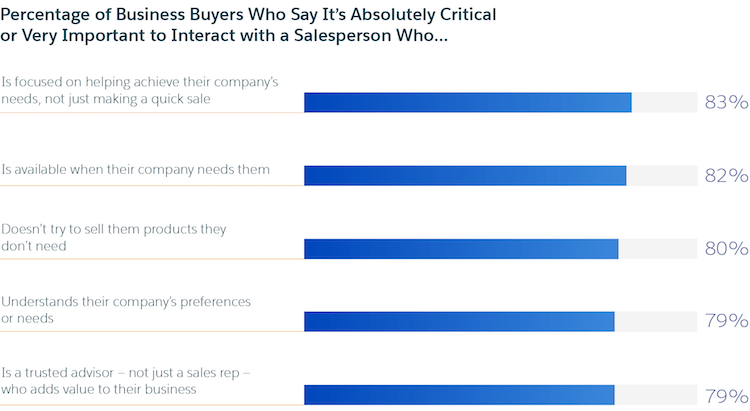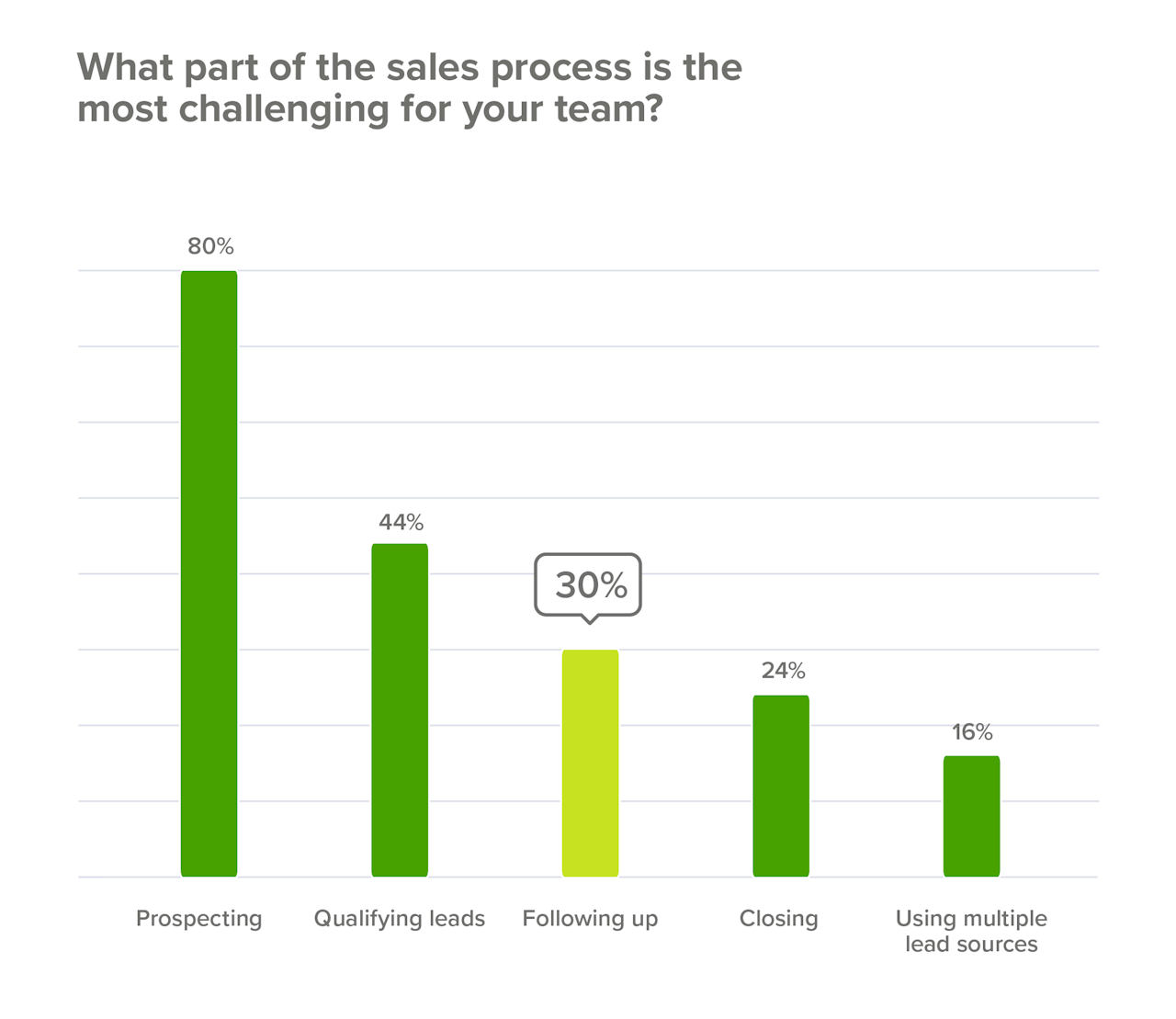5 Insanely Effective Tactics to Get Contracts Signed This Month
Jenny Keohane
Closing a sale is one of the most important parts (if not the most important part) of the sales process.
This is the pivotal moment where all your marketing and sales skills come together to convince a buyer that they need your product.
But closing the deal isn’t easy. According to studies, it’s the fourth most difficult part of the sales process.
A lot of people think that to secure a sale, they have to be over-the-top sale-sy, but that’s not true at all.
In fact, consumers today are increasingly turned off by strong sales, especially when inbound sales and attracting leads through inbound methods is becoming more common.
Even so, there’s still going to be a pivotal moment where a sale does or doesn’t happen – and there are plenty of sales closing techniques to make sure it does happen in an authentic and natural way.
First, Closing a Sale Requires You to Do Two Main Things:
1. Discover and Understand the Prospect’s Needs
Before you do anything, you need to know exactly what the needs are of the person you’re dealing with. What are their biggest challenges and why are they interested in your solution?
It’s good to get really specific here, as you’ll find each potential customer has a very unique set of needs.
The more you know about them, the easier it is to tailor your message to them and position your solution as a no-brainer.

From the customer side, dealing with a salesperson that actively wants to help is vital in deciding whether to invest or not.
2. Communicate How Your Product is the Perfect Solution
Next, you need to understand and be able to communicate how your product addresses the specific needs of each individual customer. This will determine how you pitch your sales message and the type of sales technique you use to close.
On top of these two things, you also need to decide whether it’s possible to even close the deal in the first place. To do this, ask yourself:
Is your product a fit for their unique needs?
Does the prospect have the budget to invest in your product?
Are there any red flags?
Once you’ve got this covered, you can actively work towards closing the sale. To help you out, we’ve gathered together some of the most effective sales closing techniques.
5 Sales Closing Techniques to Get Contracts Signed This Month
1. The Assisted Close (a.k.a. Ask For the Sale)
The sales process happens between two humans so sometimes it feels more genuine and honest to simply ask your prospects what you can do to close the deal.
If the idea is alien to you, you’re not alone. It might not seem particularly elegant but it gives you the information you need quickly. On top of that, consumers are more likely to buy from people they trust, and being open in this way works to build on that trust.
This technique can also help you give a personalized response and create an individual plan for each individual customer based on their answer to the question.
Start by simply asking:
What information do you need to invest in the product?
Is there anything I can do to help your decision?
Would you like my help?
The latter is actually the closing line from Dave Kurlan’s book, Baseline Selling. It reinforces his image as an advisor rather than a hard-closing salesperson and solidifies trust with his prospects.
2. The Now or Never Close (a.k.a. Promote Urgency)
It’s a psychological fact that things seem more valuable when they are considered to be scarce. For example, if we’re trying to book a holiday and see that there are only two seats left on our chosen flight or one room left at the hotel we want, we’re eager to hand over our money as quickly as possible.
While it might seem like a trope to want what you can’t have, it’s also a powerful principle in the world of selling.
Nobody wants to feel like they’re missing out on something (FOMO is a real thing, after all). This makes adding a sense of scarcity or urgency into your sales pitch almost a sure-fire way to close the deal. You can do this by:
- Offering a limited time discount to prospects (e.g. you can get 10% off your yearly subscription if you sign up today)
- Limiting the number of products and services you offer (e.g. we’ve only got space to work with 10 customers this quarter, and there are only two spots left)
- Offering an extra gift or something of value for free (e.g. if I can sign you up today, I’ll throw in the features of our Premium package for a month, too)
3. The Assumptive Close (a.k.a. Keep it Confident)
A dithering salesperson does not a sale close. Constantly asking prospects if they’re okay to go ahead or if they even want to go ahead leaves ample time for the doubts to start creeping in.
Instead, flip the script by not giving your prospects time to waver at all by assuming that they’re 100% going to invest in your product. Of course, you only want to use this closing technique if your sales pitch went well, otherwise, you will almost certainly end up losing a customer.
Start to walk your prospects through the sale by:
- Choosing a date to get everything set up by (e.g. “so, shall we set a deadline of next Friday to get everything set up on your account?”)
- Scheduling a kick-off call (e.g. “let’s schedule a call on Monday to get started. I’ve got space at 2pm if that works with you?”)
- Discussing which pricing tier is best for their needs (e.g. “by the sounds of things, it seems like you’d benefit the most from our Premium package – shall I sign you up for that now?”)
4. The Summary Sale (a.k.a. Make It a No-Brainer)
Sometimes the details get lost in the sales pitch. With this technique, you essentially repeat back all the main points so that investing in your product or service feels like an absolute no-brainer for the prospect.
Remember to recap the benefits of your product, highlight the individual needs of each prospect, and reiterate how your product or service is going to solve their biggest problems.
Finish up the pitch by going straight for the ask.
This allows you to confirm when they’d like to get started and it kicks the onboarding process into action. So, basically, prospects sign up without really even realizing it.
5. The Question Sale (a.k.a. Keep Them Engaged)
The sales process isn’t one-sided. Instead, it should be an open discussion between you and your prospect. This means you should treat it just like any other conversation you’d have with a friend, colleague, or another human being.
This sales closing technique lets you shine the spotlight back onto your prospect and engage them in the conversation. The more engaged they are and the more connected to you they feel, the more likely they are to buy.
Asking questions also gives you the chance to tackle any presale objections. If you invite a response, you can answer it head-on and eliminate any of the doubts prospects may have before they buy.
Consider asking questions like:
Do you think what I’m offering will solve your problem?
Is there anything I haven’t addressed here that you think would be important to know?
Were there any final questions you had?
The latter is such a simple way to open up the conversation and to include the prospect in the closing process.
Find Your Perfect Sales Technique to Close the Deal
Learning how to close the deal is incredibly important, but there isn’t a one-size-fits-all tactic. The way you close a sale successfully will depend on the kind of product you’re selling, the price point it sits at, and the customers you’re targeting.
A good salesperson is able to read what kind of prospect they’re dealing with, understand their main concerns and challenges, and address these using the appropriate questions and responses.
If you’re struggling to figure out how to close the deal, this list of authentic, not-too-pushy tactics is a good place to start. Consider trying them all out individually to see which ones bring in the biggest success rates.
Get sales tips and strategies delivered straight to your inbox.
Yesware will help you generate more sales right from your inbox. Try our Outlook add-on or Gmail Chrome extension for free, forever!
Related Articles
Melissa Williams
Melissa Williams
Casey O'Connor
Sales, deal management, and communication tips for your inbox


